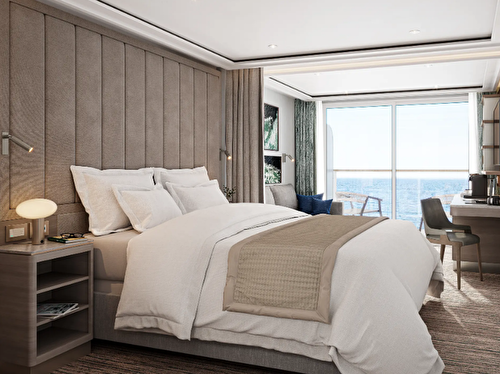Piraeus to Piraeus
- 23 Aug ‘26
- 7 nights
- Departing from Athens (Piraeus)
- Silver Nova
-
Inside price fromCall for price
-
Outside price fromCall for price
-
Balcony price fromCall for price
-
Suite price from$12,400*/pp
YOUR ITINERARY
Athens (Piraeus), Greece - Nafplion, Greece - Milos - Heraklion, Crete, Greece - Rhodes, Greece - Kusadasi, Turkey - Mykonos, Greece - Athens (Piraeus), Greece












A city of legend, civilisation and enduring culture, Ath...
The former capital of Greece is a popular town on the...
Milos or Melos is a volcanic Greek island in the A...
It may not be the prettiest place in Crete, but Heraklion&...
Located only seven miles from the Turkish coast, Rhodes i...
Since the late 1970s, Kusadasi has grown from a fishing vi...
The island of Mykonos is the most easterly of the nor...
A city of legend, civilisation and enduring cultur...
YOUR SHIP - The Silver Nova
Introducing Silver Nova – the eleventh ship to join our fleet. Our newest vessel will join us in summer 2023, and will be a home away from home for up to 728 guests. Silver Nova’s innovative asymmetrical design introduces the world like never before, offering an immersive destination experience to our guests. With a gross tonnage of 54,700 tons she will offer a space-to-guest ratio of 75 GRT-per-passenger becoming one of the most spacious cruise ships ever built. What’s more, Silver Nova will be our most environmentally friendly, and thanks to her groundbreaking technological solutions, she will propel Silversea into a new era of sustainable cruising. It’s the Nova way to travel.
Description
Introducing Silver Nova – the eleventh ship to join our fleet. Our newest vessel will join us in summer 2023, and will be a home away from home for up to 728 guests. Silver Nova’s innovative asymmetrical design introduces the world like never before, offering an immersive destination experience to our guests. With a gross tonnage of 54,700 tons she will offer a space-to-guest ratio of 75 GRT-per-passenger becoming one of the most spacious cruise ships ever built. What’s more, Silver Nova will be our most environmentally friendly, and thanks to her groundbreaking technological solutions, she will propel Silversea into a new era of sustainable cruising. It’s the Nova way to travel.
STATEROOMS
SIMILAR CRUISES
-
DateTripCruise ShipNightsPrice
-
2026-07-05Piraeus to PiraeusSilver Nova- 7Nights7
-
2026-07-19Piraeus to PiraeusSilver Nova- 7Nights7
-
2026-08-09Piraeus to PiraeusSilver Nova- 7Nights7
-
2026-09-06Piraeus to PiraeusSilver Nova- 7Nights7
*Based on Twinshare cabin


